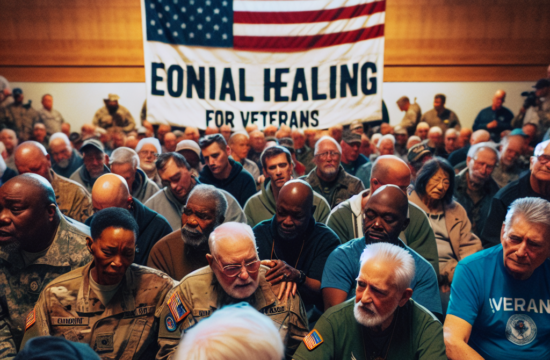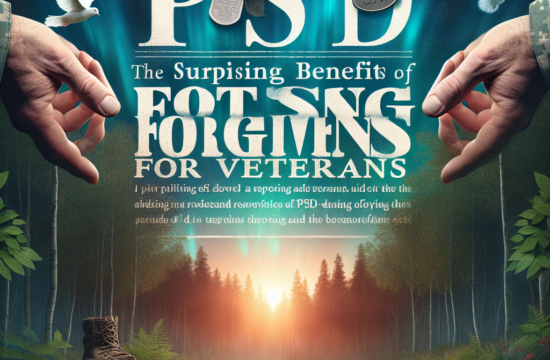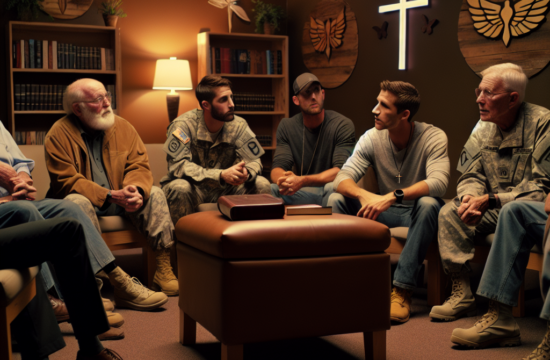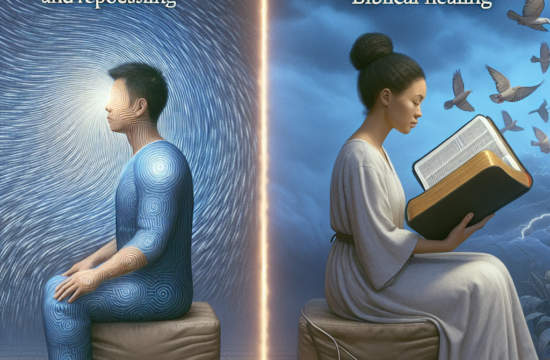==> Thank you for reading this post! Click Here If you are looking for support and Victory over PTSD.
Understanding PTSD Through a Faith Lens
What is PTSD?
PTSD, or Post-Traumatic Stress Disorder, is a condition that arises after someone has experienced or witnessed a traumatic event. It’s not just about feeling sad or anxious; it can manifest in various ways, including flashbacks, severe anxiety, and uncontrollable thoughts about the event. As someone who’s explored these experiences personally and professionally, I understand that PTSD can feel isolating and overwhelming.
Many people believe that PTSD only affects veterans or first responders, but it can impact anyone. Situations like car accidents, natural disasters, or even sudden loss can trigger this response. Recognizing this is the first step in understanding that it’s a widespread issue that requires compassionate care.
Your faith can play a crucial role here. When I faced my own challenges, grounding myself in my beliefs helped me better process my emotions and find a path forward. It reminded me that I wasn’t alone in my struggles.
How Faith Intersects with Mental Health
Faith and mental health are often discussed separately, but they can be intertwined. Many people find that their spirituality offers comfort during difficult times. It can provide a foundation of hope and a sense of purpose that helps in healing. Personally, I’ve noticed that spiritual practices like prayer and meditation help quiet my mind and center my thoughts.
Incorporating faith into PTSD recovery doesn’t mean neglecting traditional therapies. Instead, it creates a holistic approach. You can think of it like piecing together a jigsaw puzzle—each part Holistic remedies and faith come together to create a complete picture of healing.
Moreover, communities of faith can offer incredible support. Sharing your journey with others who understand can lighten the burden. Whether through church-focused support groups or informal gatherings, the camaraderie can be a healing balm for the soul.
Seeking Guidance from Faith Leaders
Part of healing is knowing when to seek help, and faith leaders can be invaluable in this process. They often have the training and insight to guide you through your struggles. When I reached out to my pastor during my rough patches, the wisdom I received helped me see my situation from a new perspective.
Faith leaders can incorporate scripture and teachings into their advice, making it relevant to one’s struggles. A session with a knowledgeable spiritual guide can feel almost like therapy, as they can help you navigate inner conflicts while offering prayers for peace and clarity.
It’s essential to find a leader who resonates with you and understands your journey. Their support can often provide a unique balm that purely clinical settings might overlook. Remember, even the strongest among us need a helping hand sometimes.
Building a Supportive Community
The Importance of Connection
Having a solid support system is crucial for anyone dealing with PTSD. When I struggled, the isolation felt suffocating. Finding a community where my experiences were shared made all the difference. Whether it’s family, friends, or your faith group, these connections can remind you that you’re not alone in your fight.
Engaging with others who have similar experiences can foster a sense of belonging and understanding. Faith-based groups often provide a safe environment to share stories and struggles without fear of judgment. It’s here that I found relationships blossoming, forming bonds I didn’t realize I needed.
Communities aren’t just for support; they can also motivate us to keep pushing forward. Knowing others are on a similar journey can provide the much-needed encouragement to take one more step on the healing path.
Faith-Based Support Groups
These groups can be a phenomenal resource. They blend mental health support with spiritual guidance, creating a unique healing environment. In my experience, entering a room filled with souls seeking the same peace was comforting. There’s an unspoken understanding that flows through these gatherings.
Often, these groups engage in shared prayer, scripture readings, and discussions, which can deepen one’s understanding and connection to their faith. I’ve found that these activities can break down barriers and open channels for emotional release.
Many faith-based organizations offer structured programs, marrying therapeutic practices with spiritual teachings. It’s a win-win, providing attendees with tools and insights for both mental and emotional healing.
Creating Personal Connections
Your journey is unique, but connecting with others can ease the burdens of PTSD. One fantastic approach I’ve found is forming smaller, informal support networks. Even simply inviting someone for coffee can lead to meaningful conversations and mutual understanding.
Engaging in community service or volunteer work through your faith organization can also build connections. Helping others often shifts our focus and can be a healing balm for our own wounds. I discovered that through helping, my pain often felt less heavy.
Don’t underestimate the power of friendship in healing. It can often be the emotional nourishment we need to navigate the complexities of PTSD. Having someone to talk to, laugh with, and lean on can rejuvenate the spirit.
Incorporating Faith Practices in Recovery
Prayer as a Healing Tool
Prayer has always been a significant part of my life, particularly during struggles with PTSD. I found that pouring my heart out in prayer allowed me to express feelings that I otherwise struggled to articulate. It can be a powerful tool for release.
Setting aside time for regular prayer can create a rhythm of hope and solace in your day. Even if it’s just a few minutes to connect with your thoughts and emotions—a moment to openly communicate with God can be incredibly grounding. I usually find gratitude spills into my prayers, reminding me of the good amidst the chaos.
Group prayer has its own magic, creating a shared understanding among participants. When surrounded by others, there’s not just support; there’s an energy that’s hard to describe. It’s as if everyone is lifting each other higher.
Meditation and Mindfulness
Incorporating mindfulness practices like meditation has become essential in my life. It’s given me tools to manage anxiety and keep me rooted in the present moment, rather than spiraling into past traumas. To me, it feels like a little pocket of peace in the midst of turmoil.
Get Support and Help with Recovery! Visit us for more Information and Support
Faith-oriented meditation often incorporates scripture or spiritual reflections, allowing you to digest your fears and hopes more deeply. When I meditate on biblical passages, I’m reminded of grace and resilience—principles that help guide my healing journey.
Surrounding myself with calming images or scriptures during meditation enhances the experience. It’s about creating a sacred space for healing that ties back into my faith, helping keep everything aligned.
Spiritual Study as a Path to Insight
Diving into spiritual texts can offer profound insights that help in the healing process. Whether it’s reading the Bible, attending study groups, or listening to faith-based podcasts, these resources can shed light on struggles and provide new perspectives. During my journey, I found that certain verses resonated deeply, giving me comfort and clarity.
Reading and studying can also reveal commonalities in human experience. Recognizing that many have walked similar paths eases the weight of loneliness. It can inspire hope, reminding us that healing is possible.
Discussing these insights with others amplifies their impact. Seeing how different individuals interpret and apply spiritual teachings can open doors I’d never thought about. It’s a beautiful tapestry we weave together through shared wisdom.
Finding Professional Help with a Faith-Based Approach
Integrating Therapy and Faith
Finding a therapist who understands your faith can be incredibly beneficial. When searching for help, I always look for professionals who recognize the importance of spiritual beliefs alongside traditional therapy techniques. A therapist attuned to your faith can help weave those elements into your healing process.
This integration can propel healing forward. By discussing faith-based resources, such as prayer or meditation, with your therapist, you can create a dynamic healing environment. I know firsthand how powerful it is to combine clinical approaches with spiritual practices.
Just like any good doctor, the right therapist will listen, support, and guide you gently along your recovery path. Their understanding creates space for deeper discussions that resonate with your core beliefs, fostering an environment for healing to thrive.
Resources for Faith-Based Therapy
There are numerous resources available when it comes to finding faith-based therapists. Many communities have directories specifically focusing on this niche, which include professionals who blend spiritual counseling with mental health practice. Getting involved in local faith organizations can lead you to therapists that adhere to your values.
Faith-based mental health websites and hotlines can also provide recommendations. This was particularly helpful when I was navigating the challenges of managing my PTSD, as it led me to an awesome provider who understood my needs. Having that trust made a significant difference.
Don’t hesitate to ask around or even check reviews. Personal referrals often yield the best results when it comes to finding the right fit. Remember, it’s essential that you feel comfortable and understood, as therapy is a very personal journey.
Building Your Healing Plan
Creating a holistic healing plan involves integrating faith practices with therapy sessions, support groups, and self-care. It’s a blend of professional help and personal self-discovery. Think of yourself as an architect, designing the perfect blueprint for recovery that resonates with your beliefs.
I always recommend revisiting your plan regularly. As you grow and transform, your needs and priorities may shift, and it’s essential to allow for that flexibility. Personal reflection, prayer, and discussions with trusted mentors can help guide adjustments to your plan.
This comprehensive approach can enhance your healing experience. Having a roadmap that aligns with your faith and personal goals can lead to profound changes in your mental health journey.
Conclusion: Embracing the Journey with Faith
Healing from PTSD is not a straightforward path; it’s filled with peaks and valleys. However, integrating faith into your recovery can illuminate the way ahead. Through understanding, community, spiritual practices, and professional guidance, you can form a robust support system that nurtures growth and resilience.
As someone who has walked this path, I can genuinely say that embracing faith during the healing process has made all the difference. It adds a layer of strength and purpose that helps navigate through challenges and celebrate victories.
So take heart, lean into your beliefs, and don’t hesitate to reach out for support. There’s a beautiful journey ahead—one filled with hope, healing, and, ultimately, peace.
FAQ about The Spirit’s Comfort: Faith-Based PTSD Care
1. What is the role of faith in PTSD recovery?
Faith can provide hope, comfort, and a sense of purpose throughout the healing journey. It allows individuals to find strength in their beliefs and connects them with supportive communities.
2. How can I find a faith-based therapist?
Look for directories or community resources that specialize in faith-based mental health. Personal referrals from trusted friends or faith leaders can also lead you to the right professional.
3. Are support groups necessary for healing from PTSD?
While not absolutely necessary, support groups can offer invaluable community support and shared experiences that can aid in the healing process. They provide a space to express feelings and share testimonies.
4. Can meditation really help with PTSD symptoms?
Yes! Meditation and mindfulness can help reduce anxiety and promote inner peace. Many individuals find that it assists in grounding themselves and managing intrusive thoughts.
5. How do I start integrating faith into my mental health care?
Begin by exploring prayers, scripture readings, meditation, and talking to trusted faith leaders. Look for ways to incorporate spiritual practices into your daily life, while remaining open to professional help.













